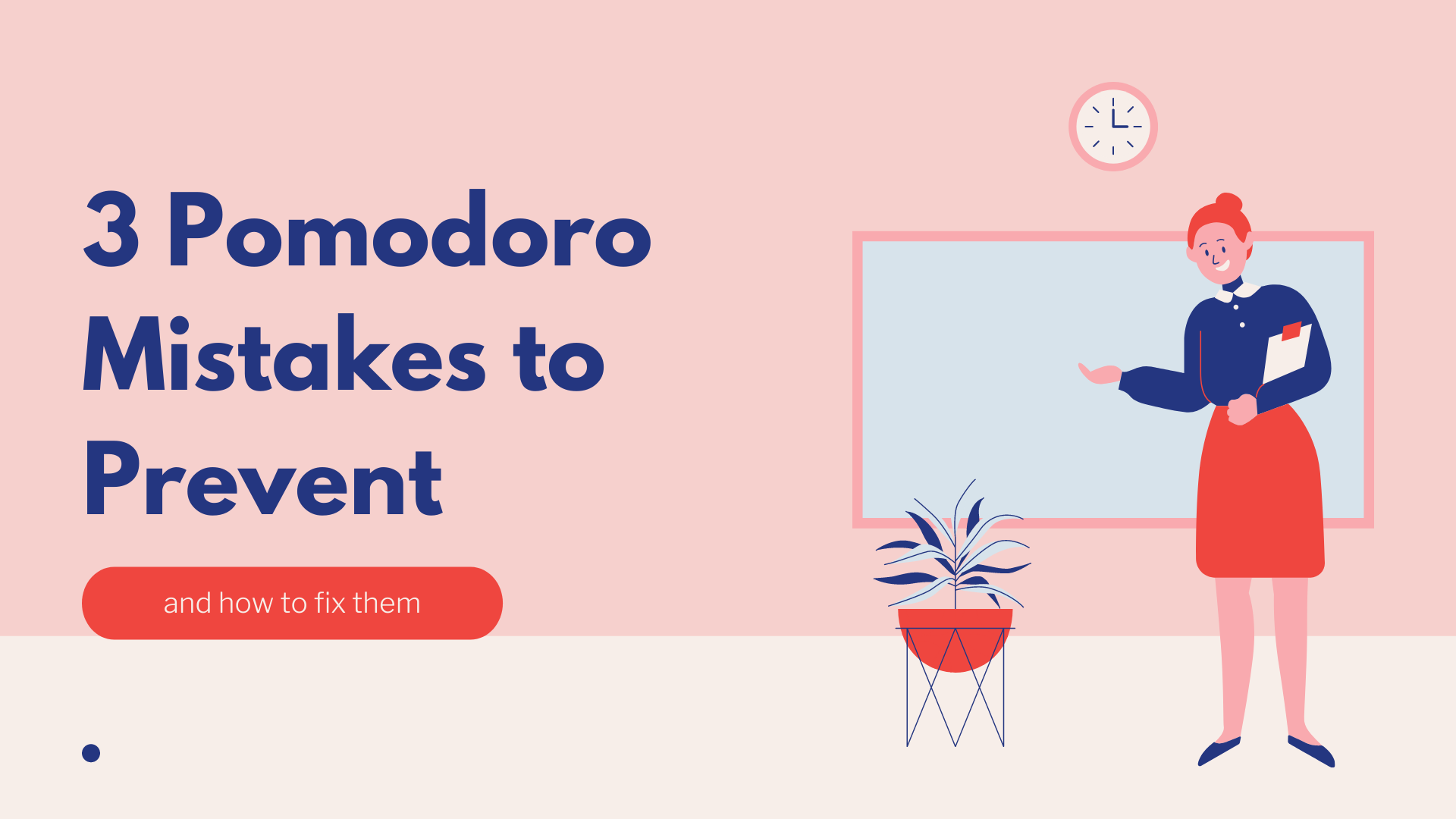In order to be productive, it’s important to use time management techniques like the Pomodoro technique. However, there are a few mistakes that can prevent you from getting the most out of this time management technique. In this article, Focuscommit will discuss three of the most common Pomodoro mistakes and how to avoid them.
The Pomodoro Technique is one of the most useful methods for your work, even though it doesn’t give you perfection results. It teaches you how to work, not rates your outcome. But when using The Pomodoro Technique, someone finds it not practical or useful as they thought – they probably broke The Pomodoro’s rules that even they don’t know!
So the question is, “What are mistakes you can meet in the Pomodoro technique?”
3 Pomodoro Mistakes to Prevent
Interrupt a Pomodoro
The most important key that the Pomodoro teaches you is distraction management, not how much time you spent on your tasks. So that you’re not allowed to interrupt a Pomodoro for any reason. Something’s like out of the current Pomodoro to find hamburger, check Facebook notifications, or talk with friends stop your session. All of them make your mind wander and take you out of concentration. Shut social media, close tabs, log out Facebook, or close the door; you create an environment that gives you the most focus. Don’t give anything an occasion to disturb you.
However, some external interruptions could happen when you are in the middle of a Pomodoro, namely an emergency call, or a friend needs help. It’s hard for you to control and predict them. But the fact that not all people needed you at that moment or within the next hours.
Many could have been a delay to the next day or even unnecessary. You should learn to prioritize what needs to do and negotiate deadlines bases on how critical the interruption is. Sometimes, you must stop a Pomodoro to check an important email. Still, it is not compulsory to spend it on replying to a friend’s messenger.
So make sure that your To-Do list included this case, and you prepared to deal with all of the unexpected interruptions. You can see some recommendation in here:
Besides, there is no notion of a half of a Pomodoro or a quarter of a Pomodoro. You are not permitted to stop a session and continuing it when you come back. If you let a disruption take your focus away from your current Pomodoro, it is considered to be unacceptable. There is no credit for partial pomodoros.
Use the break to burn yourself out.
I’m serious. Some users spent most of their short and long breaks clearing down all the interruptions, not relaxing. This method is designed to help you work productively, not to postpone interruption, and gather them to solve once. When you highly focus for 25 minutes of intense work, and still use the next 5 minutes to work again, and repeat this cycle many times, you will be exhausted. Don’t bite off more than you can chew. It isn’t sustainable that you sacrifice your time-relaxing and work continuously, you end up overwhelming and hammering yourself.
The real Pomodoro Technique is 25 minutes for monotask, 5 minutes for a short break, or 20 minutes for a long break with nothing work-related. If you use the break properly, you should know how the truly a break is. That is not the time for phone checking, time-consuming on funny videos, or solving all the unneeded problems. Many of us often spend 5 minutes on Facebook or chatting with friends, play a fun game, or watching a cut video on the newsfeed.
These types of activities rarely involve leaving your seat or taking your eyes off the screen. It means you are not really relaxed, just “playing” instead of “working.” When designing the break in the Pomodoro Technique, Cirillo wanted you to take 5 minute break to do something completely different. They could get your body moving or give your eyes a break.
Just enjoy the break, step away from your task, clear your mind, and grab a refreshment. It helps you to relax tension before starting another session again.
Keep on working “just a few minutes” when a Pomodoro ends.
The bell rang, but you needed just 2 minutes to really finish a task. So you did. And be like: it’s okay, just more than 2 minutes.
An interval of a Pomodoro lasts 25 minutes, you’re just allowed to monotask in the time given. The action of “just a few minutes” interrupts the flow of the Pomodoro Technique cycle.
The more time you widen your work, the less time you have for a break. It is not the Pomodoro. This technique teaches you how to work by dividing a big goal into small tasks, estimating the size of its to fit in a Pomodoro, putting you in a race of time, and forcing you to do all things in a time given. You must be strict with yourself. When you intend to steal break time to work, you will always have “time left.” As a result, you never try your best to finish your mission. Besides, this thought maybe makes you meet distraction and low concentration on what you’re doing.
Remember to comply with your plan. When obeying and doing it in the right way, you will see how effective the Pomodoro is. Moreover, your schedule will not be confused by many “a few minutes” times you did.
In conclusion, the key point when you do any technique is completely obeying its rules. They will really work and give you efficiency if you do it properly. In fact, on the first started using any method, you undoubtedly made a few Pomodoro Mistakes. Don’t worry, on the other hand, it is also the best way to learn and find a way to fit this system for you.

